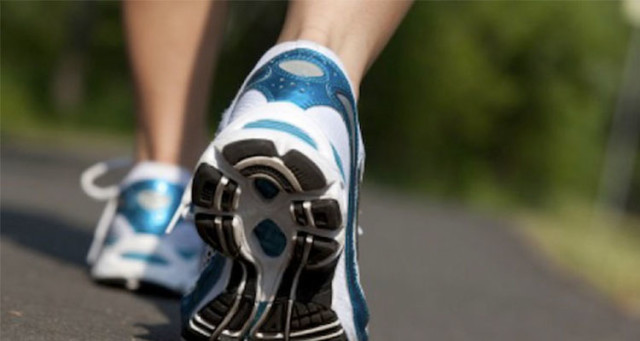Walking is an English word which means to walk. Commonly, using the English terminology, it refers to one of many forms of fitness. Many consider walking a real sport, but in reality, the walking is very often, more than a sporting activity, a real form of low-intensity training quality.
The walking is, without a doubt, an activity difficult to assess because its benefits are closely related to the frequency and duration. If no one runs for ten minute by bike or out for a quarter of an hour, is very common to hear a short walk to state that it is an extremely healthy. But things are a little different.
In order for the simple walks (in various forms) can make changes beneficial to our body is not sufficient fifteen minutes of walking per day are needed at least two hours every day (we can quantify the workload at least 50 km per week). Walk a quarter of an hour can bring psychological benefits (comes off from work, relaxing, etc….).
The same ones who can give the vision of your favorite program on television, but no one would say that watching television is sports. That is, we must not confuse the psychological benefits of an activity (sports or otherwise) with the physical ones.
There are already human activities that involve walking (such as hiking or hunting), these activities become workouts only if carried out for ten to fifteen hours per week. Only with such an amount of work at a low speed is obtained a cardiovascular protection superior to that of the sedentary (let alone the studies that say that if you walk fifteen minutes a day, our life expectancy is greater than three days compared to that of the sedentary pure …) and a control body weight (a 50 kg person burns 130 calories per hour, beyond the normal basal metabolic rate).
The various forms of walking.
With time, probably with the purpose of encouraging the greatest number of people to the practice of a, albeit mild, form of motion, have been proposed different variants of walking. Among these, there are the Nordic walking, fitwalking, power walking, mindful walking, walking the energy and so on. Nordic Walking (Nordic Walking) modern is a physical activity that has been recognized as a sport in relatively recent times (1997), his ” invention “, if I may say, is attributed to the Finnish Marko Kantaneva.
The modern Nordic walking has grown mainly on the basis of the training carried out cross-country skiing season. This type of physical activity is actually carried out using special sticks that are very similar to those used by cross-country skiers. In this discipline, we have devoted a separate article: Nordic walking, to which we refer those who want to read up more thoroughly.
The fitwalking is a discipline that has gained a cult following over time in our country. Fitwalking is an English word that derives from the term’s fitness (fitness) and walks (walk), can be practically translated with the phrase walking to stay in shape. Many, among other things, define the fitwalking as the art of walking. To practice this discipline should be taken at least one variable speed between 7 and 9 mph.
The Power Walking.
The power walking is a form of walking that could be defined as a walk enhanced, strengthened the term refers to the fact that this type of discipline involves a greater commitment in terms of speed and effort despite not being a form of stroke. There are several types, among the most famous include the wogging (Combination of walking and jogging) the sand and power walking.
The wogging is a form of power walking, which involves the use, during brisk walking, hand-held weights (dumbbells), wrists (wrist bands) or ankles. The idea is to solicit, and consequently, strengthen the muscles of the torso and arms while increasing the load on the legs and then the training effect. The application of ankle weights is to strengthen the leg muscles and joints. The risk of this discipline, especially in poorly trained individuals, lead to joint trauma.
The sand power walking (or power walking on the sand) is a form of activity that seems born in the land the U.S., specifically in California. The power walking on the sand should be carried out by walking barefoot, and strode on the sand. This type of activity should, according to its supporters, bring significant benefits to the muscles of the ankle joint, improve posture and improve the elasticity of movement.
Other benefits attributed to sand power walking are the strengthening of the musculature of the legs, trunk, abdomen, back and buttocks. The beginner should start with a walk of about 10 minutes to arrive then, with the passage of time to increase your training time up to a maximum of 30 minutes.
The mindful walking.
The mindful walking is a variant of the so-called mindfulness, a form of contemplative meditation, which has as its aim the increase in self-esteem and self-awareness. The lovers of mindful walking apply the techniques of concentration to walk, turning it into a real relaxation technique; through mindful walking you can, they say, not only promote mental well-being, but, of course even the physical.
The suggestions for the practice of mindful walking are very similar to those given to other relaxation techniques (listen to your body, try to focus your thoughts on the muscles in action trying to figure out which ones are relaxing and those who tend try to perceive what surrounds us, sounds, noises, etc….).










